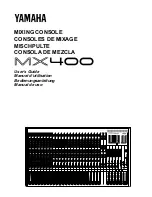
The recommended flow velocity in the pipe is 35…40 m/s at full output. If there are many resistance factors
in the piping, or the pipe is very long, then the flow velocity needs to be lower. The exhaust gas mass flow
given in chapter Technical data can be translated to velocity using the formula:
Where:
gas velocity [m/s]
v =
exhaust gas mass flow [kg/s]
m' =
exhaust gas temperature [°C]
T =
exhaust gas pipe diameter [m]
D =
The exhaust pipe must be insulated with insulation material approved for concerned operation conditions,
minimum thickness 30 mm considering the shape of engine mounted insulation. Insulation has to be con-
tinuous and protected by a covering plate or similar to keep the insulation intact.
Closest to the turbocharger the insulation should consist of a hook on padding to facilitate maintenance.
It is especially important to prevent the airstream to the turbocharger from detaching insulation, which will
clog the filters.
After the insulation work has been finished, it has to be verified that it fulfils SOLAS-regulations. Surface
temperatures must be below 220°C on whole engine operating range.
11.3.5
Supporting
It is very important that the exhaust pipe is properly fixed to a support that is rigid in all directions directly
after the bellows on the turbocharger. There should be a fixing point on both sides of the pipe at the support.
The bellows on the turbocharger may not be used to absorb thermal expansion from the exhaust pipe. The
first fixing point must direct the thermal expansion away from the engine. The following support must prevent
the pipe from pivoting around the first fixing point.
Absolutely rigid mounting between the pipe and the support is recommended at the first fixing point after
the turbocharger. Resilient mounts can be accepted for resiliently mounted engines with long bellows,
provided that the mounts are self-captive; maximum deflection at total failure being less than 2 mm radial
and 4 mm axial with regards to the bellows. The natural frequencies of the mounting should be on a safe
distance from the running speed, the firing frequency of the engine and the blade passing frequency of the
propeller. The resilient mounts can be rubber mounts of conical type, or high damping stainless steel wire
pads. Adequate thermal insulation must be provided to protect rubber mounts from high temperatures.
When using resilient mounting, the alignment of the exhaust bellows must be checked on a regular basis
and corrected when necessary.
After the first fixing point resilient mounts are recommended. The mounting supports should be positioned
at stiffened locations within the ship’s structure, e.g. deck levels, frame webs or specially constructed
supports.
The supporting must allow thermal expansion and ship’s structural deflections.
11.3.6
Back pressure
The maximum permissible exhaust gas back pressure is stated in chapter Technical Data. The back pressure
in the system must be calculated by the shipyard based on the actual piping design and the resistance of
the components in the exhaust system. The exhaust gas mass flow and temperature given in chapter
Technical Data may be used for the calculation.
Each exhaust pipe should be provided with a connection for measurement of the back pressure. The back
pressure must be measured by the shipyard during the sea trial.
11.3.7
Exhaust gas bellows (5H01, 5H03)
Bellows must be used in the exhaust gas piping where thermal expansion or ship’s structural deflections
have to be segregated. The flexible bellows mounted directly on the turbocharger outlet serves to minimise
Product Guide Wärtsilä 34DF - 3/2012
107
Product Guide
11. Exhaust Gas System
















































